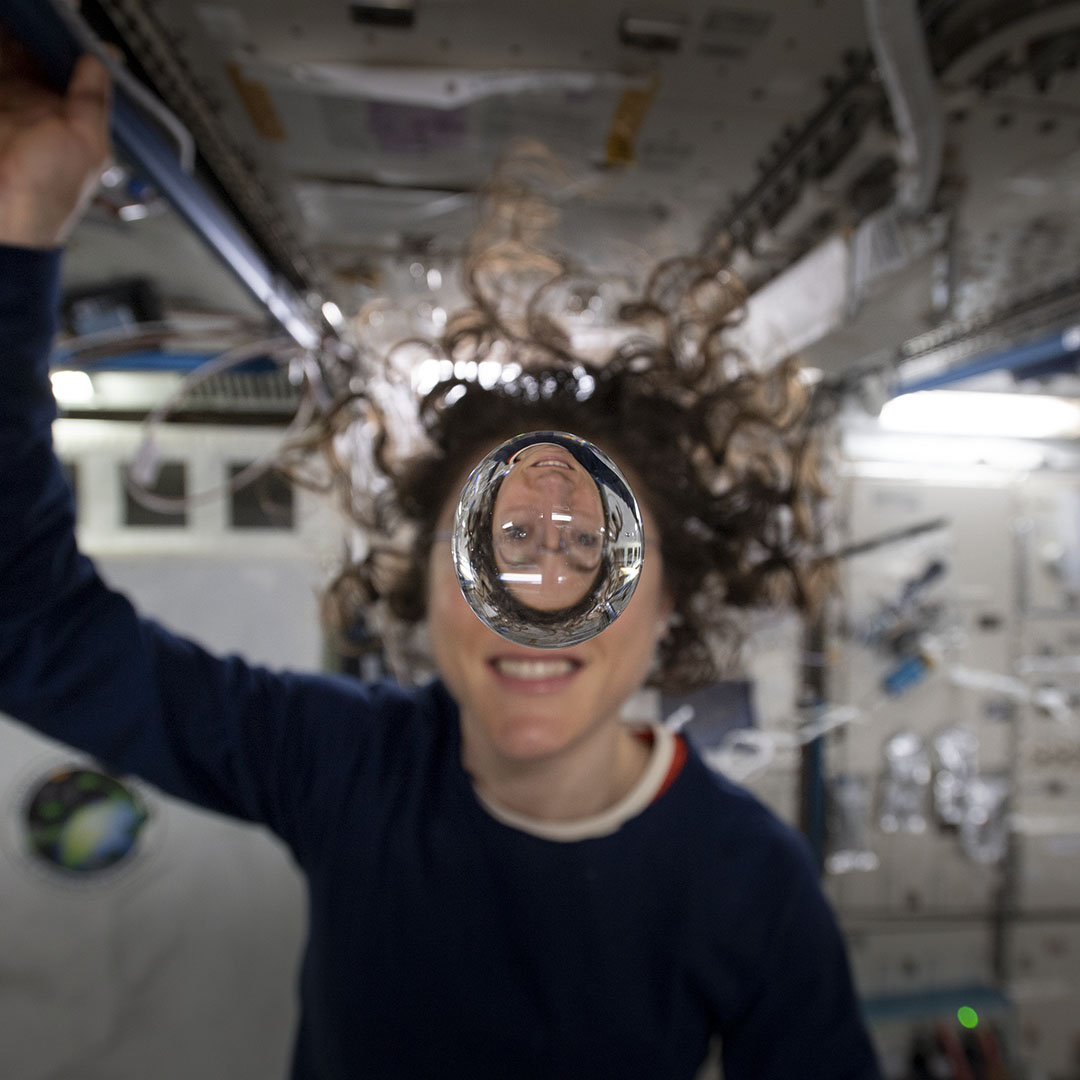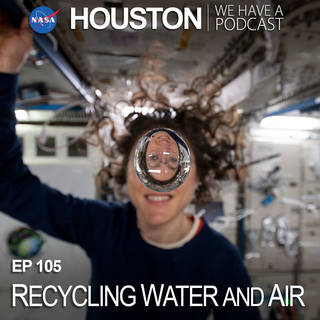
If you’re fascinated by the idea of humans traveling through space and curious about how that all works, you’ve come to the right place.
“Houston We Have a Podcast” is the official podcast of the NASA Johnson Space Center from Houston, Texas, home for NASA’s astronauts and Mission Control Center. Listen to the brightest minds of America’s space agency – astronauts, engineers, scientists and program leaders – discuss exciting topics in engineering, science and technology, sharing their personal stories and expertise on every aspect of human spaceflight. Learn more about how the work being done will help send humans forward to the Moon and on to Mars in the Artemis program.
For Episode 105, Laura Shaw, the International Space Station Program Lead for Exploration Life Support Systems, discusses the systems on the station that create a livable and comfortable space for astronauts and cosmonauts. Shaw describes how improving these systems will be critical for exploring the Moon and Mars. This episode was recorded on April 18th, 2019.
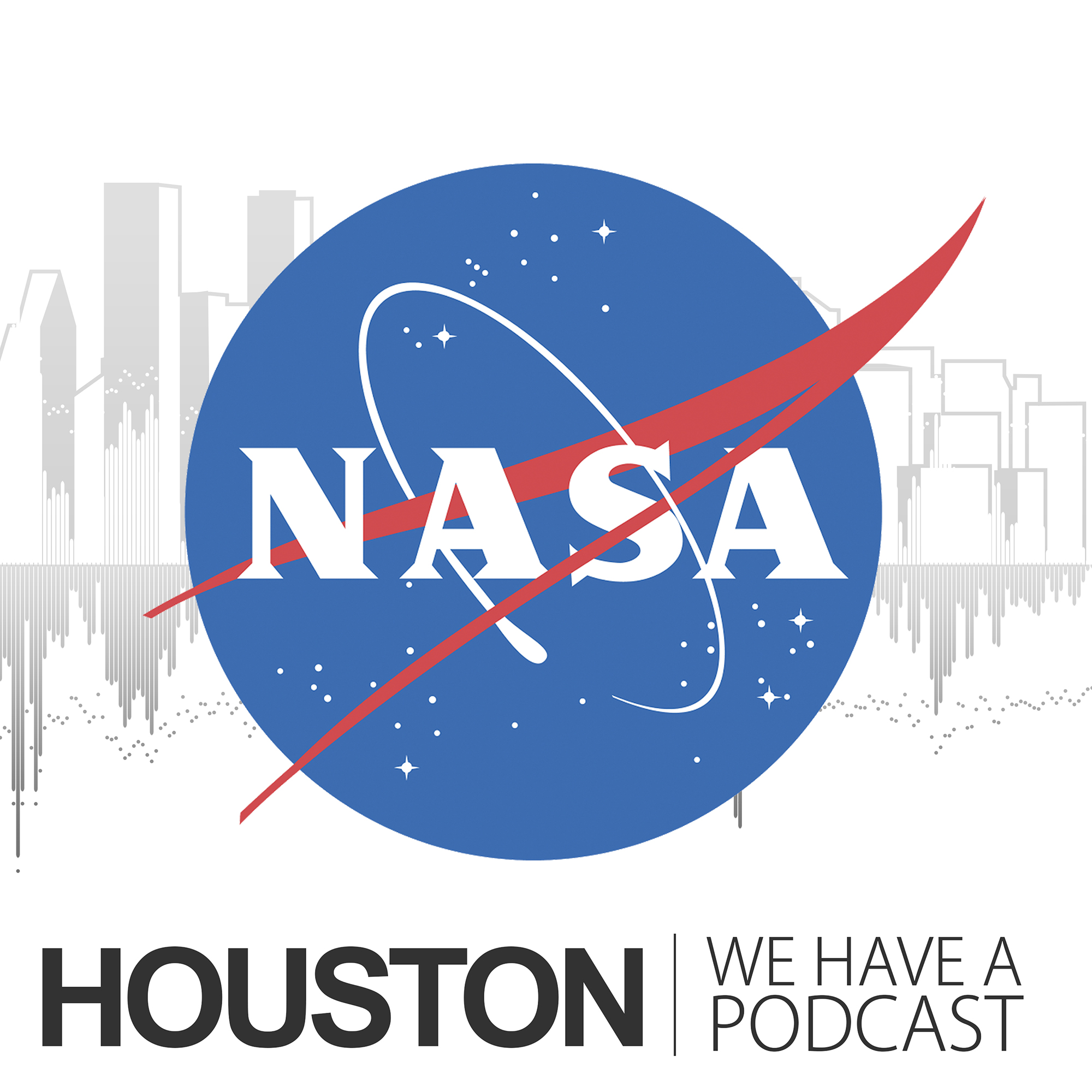
Transcript
Gary Jordan (Host): Houston, we have a podcast. Welcome to the official podcast of the NASA Johnson Space Center, Episode 105, “Recycling Water and Air.” I’m Gary Jordan and I’ll be your host today. On this podcast we bring in the experts, NASA scientists, engineers, astronauts, all to let you know the coolest information about what’s going on right here at NASA. So a while back in February, we spoke to John Lewis, the manager of the Orion Environmental Control and Life Support Systems, and we talked about how Orion is specifically designed to provide a livable, reliable environment for travel through a harsh, deep space environment. Well, a little closer to home, the International Space Station relies on these systems which we call ECLSS systems and you’ll hear that a lot during this episode. These systems sustain a livable environment for crew members staying in lower orbit for a long period of time. There’s a lot of elements that go into an ECLSS system. The parts of the Space Station where astronauts live have an atmospheric pressure of 14.7 psi, about the same as Earth at sea level, for the crew, but also then for sensitive equipment stored on the station. It’s a mixed air environment of nitrogen and oxygen, again, like on Earth. And there are systems for scrubbing every exhale of CO2 and replacing it with more breathable oxygen, which is very important. There’s also some systems that pull in water from every available source: Urine, sweat, even just humidity, or an astronaut’s breath. And then it recycles it into potable or drinkable water. We’re reclaiming 90% of the water used at this point. There’s another system for splitting water into breathable air, and another for turning air into water. What? The idea is to maximize the finite and very limited resources available. This includes a partially closed loop system to reuse and recycle these resources. For exploration to other worlds, they will need to be more reliable, easier to maintain, and even more efficient. And then designing these systems that good is going to be very, very challenging. So today we’ll be talking more in depth about these systems on the International Space Station with our guest, Laura Shaw, the International Space Station Program Lead for Exploration Life Support Systems. Man that is a complicated title. But Laura goes into what’s on board the station now and how we’re improving these for the sake of exploration which is a term we use a lot during this episode. Really, it just means exploring beyond low Earth orbit, exploring other worlds, very important for the International Space Station being used to test all of these systems. And this is a very exciting topic. So with no further delay, let’s jump right ahead to our talk with Ms. Laura Shaw. Enjoy.
[ Music ]
Host: Laura, thank you so much for coming on the podcast to talk about environmental control systems on the Space Station.
Laura Shaw: Good morning.
Host: You know, when, just a couple of weeks ago when we did an interview on this subject, it was just my job to basically set up the interview and listen, but it was just absolutely fascinating. You know, there’s, it seems fairly simple, you know, when you’re on the Space Station there’s going to be stuff that keeps the astronauts alive and healthy, which is very normal, but what it takes to do that is multiple systems and it can get a little bit complicated. So I’m glad that you can come on to talk about this. And I kind of wanted to start there, just what is, it’s called ECLSS and I feel like it’s inevitable, we’re going to say ECLSS a bunch of times, but it’s Environmental Control and Life Support Systems, basically, you know, making it a habitable space in this tin can of a spacecraft.
Laura Shaw: Right.
Host: You know, what is it? What is an Environmental Control and Life Support System?
Laura Shaw: Right. It’s what you said. It’s creating a habitable environment. So what I like to sort of compare it to is we’re creating a small planet inside this spacecraft, one that can support the humans. And so we have to create this environment that makes them comfortable, obviously keeps them alive, that’s the minimum. So we create, you know, an atmosphere they can breathe. We create good, clean water that they can drink. We provide bathroom facilities. So and we remove contaminants from the air that they plus their equipment generate so that we can keep the air quality clean.
Host: So it’s, so and going into that, there are multiple components of this, right. So what does it take to keep a crew member alive in space? It’s the pressure. It’s the air composition.
Laura Shaw: Right.
Host: It’s, and, like you said, scrubbing the air. What does that mean? Why do we have to scrub the air? So what are the different components?
Laura Shaw: Right. As you said, we need an atmosphere, so we need structure to hold the air in. And it needs to be at the right pressure so that the crews’ lungs can function normally. And it has to be at the right concentration of oxygen and nitrogen so that, again, so that the crew’s body knows what to do with it. We need to scrub out the things that are waste products. So carbon dioxide is the most major of those. And people are probably familiar with the Apollo 13 issue with the CO2 scrubber had, they ran out of cartridges. They had to mock up the square peg in a round hole issue. That’s what we’re dealing, you know, we’re still dealing with obviously carbon dioxide being removed from the atmosphere. So that’s a very key contaminant to be removed. And then there are also trace contaminants we call them. So some formaldehydes, things that the crew themselves actually off gas. We actually, humans, you know, give off some products. And then their clothes, their equipment, their hygiene products, things like that will give off contaminants that we need to remove so that they have a good, clean atmosphere to breathe. So that’s for the most part the air revitalization system. And then we have the water recovery, water processing system. So we start with the bathroom function. So we’ve got facilities for both liquid and solid human waste collection. And then we take the urine from the crew and we, there’s a lot of water held up in that. So, you know, we can’t continue to resupply water. It’s very heavy. It’s very expensive to launch equipment to space. So we process the urine with a distiller and we remove the good water from there and then we use another system to combine the distillation product and the humidity condensate which is crew exhaled breath has a lot of humidity in it as well as sweat. We collect all of that and we process that to potable water. And it’s very, it sounds gross but it’s actually very clean water. We actually, we monitor its quality continuously to make sure that it’s good for crew to drink and they seem to like it.
Host: You know, I heard that, and you can probably confirm that this is true, if the potable water, the water that the astronauts are drinking on Space Station is actually relatively cleaner than, I guess, average water that we drink on Earth.
Laura Shaw: Yes.
Host: Yeah. That is awesome. And it’s coming from urine which is especially, especially important.
Laura Shaw: Right.
Host: I believe urine is actually the largest source of recycled water, is that right?
Laura Shaw: Right. That is right. It’s about half.
Host: About half, okay.
Laura Shaw: So it’s, but it’s, yeah. The rest of it is from multiple sources including some of our, as we’ll talk about later I think, regenerative systems that recover some water from the air. We’ll talk about that later I think.
Host: Yeah. So the basics of a successful environmental control system on the Space Station is dealing with air and water.
Laura Shaw: For the most part. Yes.
Host: Yes. For the most part, right.
Laura Shaw: Yes.
Host: Okay, so before we get into, and I kind of wanted to go into detail of all of these systems and exactly what they’re doing, but before we do that, you know, this is where we are now, obviously, where, and we’re, would you say we’re fairly good at it? We’re fairly good at sustaining this environment in space?
Laura Shaw: Yeah. I mean we’ve had crew on board ISS almost 20 years continuously. So, yes, we’ve gotten good at it. The hard part, the regenerative piece that we’ll talk about, is been out there for about ten years. And it’s difficult, you know, there’s a lot of fluids flowing from one system to the other. There are a lot of challenges there. But we’ve learned a lot and that’s going to help us both continue operating ISS and then onto the next thing out of low Earth orbit to the next, to the Moon or Mars, or wherever we go.
Host: Interesting. So ten years, so there was a starting point obviously, we had to start somewhere. Where did the International Space Station start and then how did it evolve to get to that regenerative system, to ten years?
Laura Shaw: Right. So when we initially launched the modules to space, there were no life supports systems initially and so we relied on, at the time, the Space Shuttle which brought up the U.S. modules. And then as we added modules, those also came with the life support systems. So that was the point in time when we could actually have permanent habitation of the Space Station was when we added those life support systems. The first ones were, for the most part, the things that are what we call a quick time to effect, so the CO2 removal device. You need to remove that quickly and it has to be continuous or else crew can be affected very quickly. And obviously we got to supply oxygen. We did that with tanks for a very long time, mostly from the shuttle as a resupply vehicle. So we added CO2 removal, oxygen supply, and then temperature and humidity control. That’s another aspect we didn’t talk about, by the way, is a comfortable atmosphere, like part of living in like a, you know, a house is having a controlled environment. So a good temperature that’s fairly comfortable and humidity levels that are comfortable. So that’s another aspect. So we added those to the ISS to make things comfortable for crew where they were living, and then we evolved to the water processor, the urine processor, the oxygen generation system that creates oxygen from water. And then we had some additional, we’ll talk about the Sabatier, which takes in CO2 and hydrogen and creates water out of it. So that’s kind of how we’ve evolved.
Host: Yeah.
Laura Shaw: Over time.
Host: So, yeah, there’s a lot that we want to talk about obviously because there’s a lot of elements to this. So let’s just get right into it. And I think one of the most important elements that you noted right up front, and especially when we talked to John Lewis about the Orion systems, which is a much smaller cabin and how they have to deal with that. One of the first things that you have to consider is getting rid of that CO2.
Laura Shaw: Yes.
Host: So how does that work now? How do we get rid of carbon dioxide on the Space Station?
Laura Shaw: Okay. We use absorbent beds with a material called zeolite that is, it has a strong desire to absorb CO2. So we’ve got the zeolite material packed in a bed and we flow air through it basically. Before that we take out a little bit of the water because the zeolite is affected by water negatively. So we pass the air with CO2 in it through these beds, and that zeolite just grabs onto the CO2, and then the air comes back out, and it’s lower in CO2, and that’s how we scrub the atmosphere of the CO2.
Host: Sounds like a filter essentially.
Laura Shaw: Basically, but the problem is you’re going to fill that filter up. And so to get rid of that, to get rid of it on that filter we actually expose, we use a little bit of temperature and we expose these beds to vacuum and that actually, or low pressure, and that drives the CO2 off of the zeolite and we either vent it to space or we use it process further on in our regenerative system. And so there are two of these beds and one of them is always removing the CO2 and one of them is always getting rid of it and venting it overboard, or to the processor. So there’s always one of them, they’re out of phase, right, and so there, just one of them that’s always absorbing the CO2 from the atmosphere.
Host: Are they in the same place of the Space Station?
Laura Shaw: Yeah. So there are, yes. Each of the, we have two full systems because it’s such an important function.
Host: Right.
Laura Shaw: It’s called the CDRA, the carbon dioxide removal assembly. There are two. One of them is in node three. And one of them is in the US lab. Yes. So each of those CDRAs has two beds inside of it that are out of phase and operating to continue to absorb versus de-sorb, or get rid of that CO2.
Host: I see. So they’re basically next to each other. One’s on the inside. This is the one getting rid of the CO2.
Laura Shaw: Yep.
Host: And at the same time there’s another one just venting, you said venting it off.
Laura Shaw: Yep. And then they switch.
Host: And then they switch. Yeah. Because it’s basically like cleaning the filter.
Laura Shaw: Yep.
Host: Essentially. Okay. Yeah, how does that work? Is that an automatic thing? Is that something that needs crew interaction or anything?
Laura Shaw: No. The system has a controller attached with it, to it, that it knows what to do and when. So it switches between those beds on a planned basis automatically.
Host: Okay.
Laura Shaw: Yeah.
Host: These beds that have — zeolite?
Laura Shaw: Zeolite.
Host: Zeolite. Do they need to be switched out every once in a while just kind of like a dirty filter?
Laura Shaw: So, yes. We’ve learned a lot about these beds over time. They do clog with some particulate. We get some dust coming off of the zeolite material. So we’ve had to replace the beds periodically to regain the function. And this is an area we’re focusing on for improvements for our exploration because it’s such a key important area.
Host: Oh. Okay. What source of improvements need to be made for exploration?
Laura Shaw: We’re looking at some alternate materials inside those beds that don’t have that dusting issue that I mentioned.
Host: I see.
Laura Shaw: We are also looking at that same material and just containing the dust a little bit better or reducing it by geometries of the zeolite, things like that. We’ve just learned a lot about the details of these systems and, you know, little tweaks you can make that make the operation more efficient, more reliable, so just a better system to take far away from Earth, which is a lot, you know, a lot harder to do. You have to take a lot of spares with you.
Host: Yeah. Now thinking about better systems, I think one of them, if I’m not mistaken, is called thermal amine.
Laura Shaw: That’s right. Thermal amine scrubber, yep.
Host: Okay. So what is, is this an exploration technology?
Laura Shaw: It is. In fact, it’s on its way to ISS right now.
Host: There you go.
Laura Shaw: Launched on NG 11. Yes. It is amine based. Instead of zeolite, the media that removes the CO2 is called amine, an amine bead. And so it’s a similar type set up where it has the two beds. It actually has four beds. But they’re smaller and so they’re, instead of just two going back and forth, there’s four going back and forth faster. It just may be a little bit more efficient.
Host: I see.
Laura Shaw: We’re going to find out. But, yes. So that one we’re going to test it and we’re going to see does it have any other of these similar types of concerns. The amine beads are the same actually as in the Orion CO2 removal device.
Host: Oh, really?
Laura Shaw: Yeah.
Host: So this goes back to your point about, you know, the International Space Station as a test bed.
Laura Shaw: Right.
Host: You know, when we’re thinking about exploring even further out, you know, we’re talking about this gateway. We’re talking about lunar exploration. While we have the International Space Station, let’s check out some of these important things just like, for example, carbon dioxide scrubbing which is one of the most important elements of keeping crew members alive in space, and test out this possibly more efficient technology. That’s what you’re saying. We’re going to check it out. Let’s see if it’s better.
Laura Shaw: We are. We’re going to fly it, and we’re going to turn it on, and we’re going to see what happens. We’re also going to fly two other technologies that are a bit different. One of them is just like that CDRA I mentioned, but improved. And we’re going to test those as well. And then we’ll have a lot of data to make a good choice for exploration.
Host: Perfect.
Laura Shaw: Yeah.
Host: Perfect. And that’s, you said that’s coming up right now. I mean we’re recording this in what, April now, and at this time, April eighteenth, the Northrup Grumman is on its way — .
Laura Shaw: Yes.
Host: To the Space Station.
Laura Shaw: It’s on its way.
Host: So by the time we release this, yeah, we’ll see what else goes up.
Laura Shaw: It may very well be operating by that point.
Host: Very, very interesting. Now this is, again, just one element of the environmental control is carbon dioxide scrubbing. You said there is a couple elements that get up there. I do want to skip ahead to, I think, one of the things that everybody wants to know about.
Laura Shaw: Yeah.
Host: Is you talk about recycling urine.
Laura Shaw: Right.
Host: On the Space Station. This is a huge thing and it’s not, you know, urine is just about half the story. There’s other sources of water that it’s recycling into potable, into drinkable water. So what is this system, this water reclamation system?
Laura Shaw: Right. So it takes, we have a microgravity compatible toilet. That’s where it all begins. Which is harder than it sounds, you know. And, you know, you know how a ground toilet works, right. It uses gravity heavily.
Host: Yeah.
Laura Shaw: We don’t have that. So we use air to entrain, to pull the urine down into a hose. And then we’ve got a rotary separator that’s spinning and it separates the liquid from the gas and that’s very important for pumps and things like that. That’s one of the challenges of microgravity in general is having liquids and gases in the same place. They don’t, you know, on Earth you got like, you know, something a carbonated beverage, let’s say, those bubbles rise and they go into the atmosphere and they’re gone. That doesn’t work in space. They just sit there and they just stay together. So you got to actively separate them and that’s what the toilet, really that’s the heart of the toilet is this spinning separator that separates those two out. So anyway, we get the urine and we’ve pretreated it because we want to keep it from growing fungus and things like that.
Host: Very important.
Laura Shaw: Yep. To keep everything viable. So we send that to the urine processor and that uses, as I mentioned, same problem here, though. We’re trying to basically distill off good water and leave behind all the yucky stuff. Hard to do in space. So we use, again, rotation. We use a rotary distiller using vapor compression distillation, which basically means we’re distilling at low pressures and high temperatures basically. And it’s used on the ground, too, but we’ve used it, we’ve modified it to be this rotary version. So anyway, it puts the urine on this surface of this rotating drum, that’s what the urine processor does. And then the heat makes it evaporate. And then we collect the humidity which is fairly clean at that point, not drinkable, but fairly clean. We condense it and we send it to the next stage processor. The brine, which is the salts that are left behind, all the yucky stuff, we, right now we put it into storage containers. We’re going to work on that for exploration to get more water out of that brine. We got a new system that will fly in early 2020 to ISS and we’ll demonstrate a brine processor and it will remove the residual water that’s in that brine so we can also process that in the further stage processing.
Host: Okay.
Laura Shaw: So it’s drinkable.
Host: And that’s that yucky stuff. So the yucky stuff, instead of going straight to storage which I guess would be discarded up later.
Laura Shaw: Yes. We discard of it, we discard it today, yes.
Host: Yeah. It would go, I guess, through another system and squeeze out just a little bit more water.
Laura Shaw: That’s right.
Host: Okay. Yeah. And right now, and this is a technology that has been improving constantly over the years for reclaiming that water, for getting as much water out of this thing as possible, potable water, something you could turn into something usable.
Laura Shaw: Right.
Host: And I think we’re at 90% now, right.
Laura Shaw: Yes. Total water recovery on ISS is 90%.
Host: Okay.
Laura Shaw: And so 10% is getting dumped overboard. And so that’s not good enough for Mars. We’d like to do, for a Mars transit mission, we’d like to do closer to 98%. And that just means we take a lot less resupply water with us. And as I mentioned earlier, water is very heavy and so we want to recycle as much as we can.
Host: Mm-hmm. So, okay, yeah. Right now the situation for the yucky stuff, you take the yucky stuff, it goes, you said a storage container.
Laura Shaw: Right.
Host: And then what, the crew puts them on a cargo vehicle and sends it away?
Laura Shaw: Yeah. It comes down with the rest of the trash.
Host: I see.
Laura Shaw: Which gets burned up in the atmosphere.
Host: Okay.
Laura Shaw: Yeah. But there’s water in there. We want to get that back. That’s — .
Host: Right. Yeah. That’s the key, getting that extra eight percent.
Laura Shaw: Right.
Host: So again, this is just for water reclamation, 90% of the water, of reclaiming that water. Urine, this processor you’re talking about is just a small part of the story. Where is all the other water coming from and getting put back in.
Laura Shaw: As I mentioned, we have to perform humidity control in the modules to make sure it’s comfortable for the crew. It’s also, it needs to be at a certain level for the equipment so we don’t have any issues there. So it comes from the crews’ byproducts. So their breath, their sweat. We’ve also got payloads that create humidity. We’ve got stored water that, some of the water comes through the bag and comes into the atmosphere so we’ve got to make sure we control that. And then the Sabatier process, which we’ll talk about, creates water. It creates water at the elemental level and then we actually process it again to potable water for drinking.
Host: Yeah. That’s a huge part of the story. So back to humidity control first though. I’m guessing there’s a central area where that takes place, where it’s actually taking away the humidity and putting it back into the water system. Is there fans to bring all the humidity back over to that area?
Laura Shaw: Yes. We actually have one of these, it’s called condensing heat exchanger. So it uses low temperature cooling water across a metal surface which, if you’ve ever had a cold drink on a table in Houston or anywhere else in the summer, right, it’s going to condense on the outside. It’s the same idea. It’s, you know, water from the atmosphere condenses on those surfaces because the dew point locally is at a level that it’s going to condense. So basically we condense the water on these surfaces and then we, again, rotary separator because you’ve got air liquid at the same location, we suck it out with a rotary separator and then we put that into lines, tubes, send that to the water processor.
Host: Okay. And is that the other half? This humidity?
Laura Shaw: Yes.
Host: Okay.
Laura Shaw: For the most part, yes. Yes. It’s urine and it’s distilled, and then we’ve got, yeah, that basically humidity condensate that’s collected.
Host: Everything else in the air, just bring it back.
Laura Shaw: All those things together are called waste water and we process the waste water in the water processer.
Host: Okay. Now on top of this, let’s go into Sabatier. Now this is just pulling the existing water, any source of currently existing water, urine, and humidity, and sweat, and all this stuff, bringing it back and recycling it and getting it ready for it to drink again. Sabatier, though, is a system of actually creating water from different sources. And how does that work?
Laura Shaw: Okay. So we start with, back to CO2 removal — .
Host: Yes.
Laura Shaw: Briefly. We, instead of venting that CO2 to space, we use it, we compress, we pull on it with a compressor and we put it into a tank, so we save it. And then Sabatier takes that CO2, it also takes hydrogen that’s generated in the oxygen generator. And we’ll talk about that.
Host: Yeah. We skipped that one.
Laura Shaw: Yeah. It’s okay
Host: But, yeah, let’s do Sabatier.
Laura Shaw: There’s a product of the oxygen generator that’s hydrogen. So we take hydrogen and CO2 and there’s a catalyst inside the Sabatier that combines those two together and the product is methane and water. So you’re literally taking C, you know, carbon, oxygen, and hydrogen, mixing them up and you get, you know, CH4 which is methane.
Host: Mm-hmm.
Laura Shaw: And H2O. And that’s how, that’s how that works. So the methane today is vented overboard as well. But it can be potentially used as a fuel for future space craft. We also might try to process it further to improve the efficiency of the Sabatier process. But that water is then sent also, is part of the waste water that gets processed to potable.
Host: Wow. And this is a part of the system or is this just a test element at this point?
Laura Shaw: This is a part of the system. We don’t count on it as far as our water supply. We make sure we’ve got enough in our stores just in case, but it is, it had been running for many years. We actually brought it down about a year ago. We had some, it was older. It had run for a while and we wanted to learn from it. So we brought it down. We tore it apart. We’re learning all kinds of things from it. We’re going to upgrade it. We’re going to make some design changes and re-fly that also to test it for exploration purposes.
Host: Okay. Yeah. And this, and does that include the, you know, the methane part of actually potentially using that? Or are we just still focusing on the water part?
Laura Shaw: We were looking into the methane part as well.
Host: Oh, cool.
Laura Shaw: It’s a different system.
Host: I see.
Laura Shaw: It’ll be next to the Sabatier.
Host: Yeah. It sounds like everything is kind of feeding off of each other, right?
Laura Shaw: Yes.
Host: That you’re pulling from the CO2 scrubber to get a little bit of that oxygen, that’s the important part from the — .
Laura Shaw: Yep.
Host: From the oxygen generation, which, you know, obviously you need the oxygen in the air. But that hydrogen, you know, just mix it together, so — . So the idea is to close the loop as much as possible essentially.
Laura Shaw: That’s exactly right.
Host: Don’t waste anything. Use, everything has a purpose. That is awesome. And even yet, even the methane, too, you know, ejecting it now, but sure, that could be definitely something to use.
Laura Shaw: Right.
Host: Let’s go right to the oxygen generation then.
Laura Shaw: Okay.
Host: You know, we skipped over that part but it’s important. The hydrogen being fed in for the Sabatier system, but how does the oxygen itself get generated?
Laura Shaw: Yep. So this takes the potable water that we’ve created from the water recycling. We feed that to a set of basically of stack of electrolysis cells. This is the opposite of a fuel cell so it takes water in, we feed it energy, electricity, and it basically splits open the hydrogen, the water into hydrogen and oxygen. And so the oxygen goes into the cabin for crew to breathe, and the hydrogen gets separated from the water and then the hydrogen is sent to the Sabatier, or vented if Sabatier happens to not be there, like today, it’s not there while we’re fixing those problems.
Host: Relatively simple then. I mean the oxygen is coming from water.
Laura Shaw: Yes.
Host: Yeah. That’s it. So where’s the nitrogen come from?
Laura Shaw: You mean in the atmosphere? The nitrogen in the atmosphere?
Host: Yeah, in the atmosphere. Yeah.
Laura Shaw: Right now we resupply nitrogen in tanks. There’s no real way to sort of generate, you know, nitrogen from any other source.
Host: Mm-hmm.
Laura Shaw: So, yeah. We fly high pressure nitrogen tanks that then we just bleed off slowly as we need it to keep the atmosphere at, it’s, for the most part, sea level type of atmosphere composition. We’re at 14.7 psi. But, you know, 70% nitrogen and 29% -ish oxygen.
Host: There you go. Yeah. And that’s important for this — .
Laura Shaw: Excuse me. It’s 79% nitrogen and 20 percent oxygen.
Host: Seventy-nine percent, okay. Okay.
Laura Shaw: And then the rest of it’s just trace CO2 and other trace contaminants.
Host: All the little stuff, yeah. Yeah, this is, that’s important for the health of the crew, right. You know, 100% oxygen I don’t think we would want for something that’s continuously habited, right, and that has to do with, I think a lot of safety concerns, right?
Laura Shaw: Yes. Exactly right. We’ve learned throughout NASA’s history that we don’t want pure oxygen in the spacecraft. It can be flammable, right. Any little mistake with any electrical device, a spark of some kind could ignite pure oxygen. So right, so we keep it at atmospheric levels like we have on the ground for the most part.
Host: Yeah.
Laura Shaw: Yeah.
Host: Now those nitrogen, how often are we resupplying the nitrogen?
Laura Shaw: It depends on our usage. We also use it in a couple of systems to flush things out if we need to. It’s very, nitrogen’s inert, it doesn’t react with things, so we can use it to flush something out if it’s hazardous or whatever. So we would resupply a couple of times a year.
Host: Okay.
Laura Shaw: On these cargo vehicles, like NG 11, for example, would be a type of vehicle that would resupply nitrogen.
Host: Yeah. Is nitrogen a topic of discussion for exploration, too?
Laura Shaw: I think we would likely resupply with tanks again, just have a storage of it sitting there ready to be introduced when needed.
Host: Yeah. Because it’s not like the, this closed loop system where you’re using other elements. You know, we’re talking hydrogen and oxygen for the most part. You got a little bit of methane, but, yeah, nitrogen is a thing of its own.
Laura Shaw: Yep. That’s right.
Host: Okay. That’s interesting. So how about right now we’re talking about almost closed loop systems and we’re talking about mainly the importance of air and water in this environment and maintaining those. We’re getting to that 90% but what about, you know, the, nitrogen is one thing, seems like that needs to be resupplied, but the water, how often do we need to resupply that?
Laura Shaw: It’s also — .
Host: Variable.
Laura Shaw: Variable. That’s exactly right. And also ISS is challenging because we have different crew sizes. And the crew changes and then, you know, some crew drink more than others. We might have more payloads using water than we had before, so it really does vary. Same kind of thing, couple of times a year we fly several tanks to resupply our water system. And we’ve got a new system on board that’s automating some of that water management that’s coming online very soon that will, it just allows us to manage from the ground where the water is and it helps a lot.
Host: There you go.
Laura Shaw: It will help a lot.
Host: Yeah. So the idea for exploration is make this as efficient as possible so you don’t really have to rely on resupply at least as much. You probably, you know, over time eventually you’re going to need to restock and even with nitrogen. Nitrogen is just going to be something you need to think about. But yeah, yeah, it’s just basically limit that. Use what you have and maximize that use. Seems like a lot of this actually can be used here on Earth, too. You know, why waste resources when you can recycle them? Is there applications to Earth as well?
Laura Shaw: Oh, absolutely. I mean across NASA, right, we have a lot of Earth applications for the things we do.
Host: Oh, yeah.
Laura Shaw: Yeah. That rotary, the vapor compression distillation we talked about is used in third world countries were they don’t have clean water. It’s used in some of these stand alone water processors that help villages and whatnot in Africa, et cetera, have this clean water source. So, yes, there’s definitely applications. It’s not as, it didn’t pay as well to process urine all the way to potable on the ground. A lot of times they’ll, you know, take urine and process it to a certain state and then it can be released into the rivers and streams. And then we go pull rivers and streams and process that to potable water. So let the Earth do a little bit of helping us.
Host: Yeah. Yeah. Yeah, definitely. That actually reminds me, I think there was a part of the Sabatier system where we’re actually taking these elements and creating water, but I think there was a part where the water itself that is being created is not quite drinkable or potable at that point. It needs to go through, mixed with some other water as well, is that right?
Laura Shaw: Yeah. We’ve chosen to go that route. As I mentioned, we verify the quality. We check the quality regularly. If we were to take the Sabatier water and make it potable directly, we’d have to check quality all the time and it just isn’t worth the extra overhead that we have to add with different sensors and things.
Host: Yeah.
Laura Shaw: To drink it directly. And it also helps dilute the waste water a little bit, meaning the contaminant level is a little bit lower which makes it easier for the water processor to operate.
Host: Mm-hmm. So, you know, going back to the idea of the International Space Station being a test bed, being a place to not only just maximize the efficiency of all of these systems. You know, we’ve been increasing that reclamation. Right now we’re trying to get to 98% for exploration. It seems like we’ve gone over a lot of these elements already. We want to improve the carbon dioxide scrubbing. We want to improve the water reclamation. You know, what are the elements we need? Give us like a picture of the elements we need for successful life support system for exploration.
Laura Shaw: Okay. I think, as you mentioned, it’s closing that loop at much as possible to utilize all the available resources that we can and keep those in a loop, you know, and not lose those in trash or whatnot. So that’s a key because then we’re, you mentioned, you know, it’s hard to resupply to Mars. You basically have to take everything with you and if you don’t have it, you don’t have it, right. You’re six to nine months to a year away from Earth so you got to have it. So we want to reduce the reliance on taking stored water and gas. We want to increase the reliability and that’s a big area as well because that drives spares and how many you have to take. If your CO2 removal device continues to break, you just need to continue to fix parts, you don’t have, you only have so many I should say. So and we’ve seen, we’ve gathered a lot of data on ISS about this reliability concern and that’s one area we’re really focusing on trying to improve for exploration. And that’s what we intend to test on ISS is run these devices like that thermal amine scrubber for years if possible to learn how does it, not only how does it perform functionally like how well does it remove CO2, but also how do those components operate for a long period of time in the right environment, in microgravity, you know, being continuously operated.
Host: Right. It’s, that’s the idea, right. The idea is test it now, see how it works for years so that way when you go to other planets, it’s going to work for years which is going to be the length of those missions.
Laura Shaw: That’s right.
Host: Yeah. You can’t turn around and if something breaks, you got to go to the shop.
Laura Shaw: Right.
Host: You know, traveling back to the International Space Station now, how are we with reliability? How often do we have to, you know, fix all these different components, the CO2, the oxygen generation, the water reclamation? What’s maintenance like?
Laura Shaw: It’s, I’ll tell you, it’s been higher than we were hoping for as far as the amount we had to replace and that’s why we’re trying to address these issues, particularly the CO2 removal device has been a little bit, has required more maintenance than we were hoping for. And that’s why we’ve got those three different technologies that we’re testing because we want to be more reliable and fix that dust issue I talked about. That really has caused a lot of trouble. And we didn’t see it on the ground. We tested it for a good bit of time. It just behaves differently in space with the microgravity environment, et cetera. So that’s why testing on ISS is so critical.
Host: Yeah. Yeah, exactly. Yeah. Because you can try all you want down here on Earth, but it’s not until you actually get into microgravity you actually realize some of these distances — or differences. Sometimes you just got to do it.
Laura Shaw: The other aspect of our ISS test bed is that you talked about how, you know, CO2 flows from the CO2 removal device to the Sabatier, the hydrogen comes from the oxygen generator to the Sabatier. Those connections, those, you know, the fluid flowing from one to the other means that contaminants if they happen to be hold up with the CO2, for example, the carbon dioxide, can go with it and that can cause issues to the downstream systems. We’ve seen a little bit of that in our experience and that’s also what we’re really trying to learn from and fix, or at least characterize so we can plan for it.
Host: Yeah.
Laura Shaw: So that’s really critical, too, is everything operating together in the same place, in the same environment that is as close as we can get to a Mars-type mission. That’s our International Space Station laboratory test bed.
Host: Yeah. Yeah. That’s why we test all these different elements.
Laura Shaw: Yeah.
Host: You know, it’s so funny. There’s a couple things. First of all, “on the ground” has to be my favorite like phrase for talking about space stuff because only in NASA do we use “on the ground” to just, oh, I’m not talking about stuff in space or on Earth, by the way, I’m talking about stuff in space so I have to specify, yes, this thing that’s taking place on the planet Earth.
Laura Shaw: Yes.
Host: One of my favorite things. But it’s also funny, you know, you’re talking about how these just little things like contaminants in the pipes and then the way these things — . It’s almost like taking an exam and if you don’t get 100, you fail. That’s kind of what we’re dealing with here. We’re improving that reliability — .
Laura Shaw: Yes.
Host: Getting that 100% on that exam for making the system pretty much perfect.
Laura Shaw: Right. It has to be because crew is relying on it to survive, right.
Host: That’s the difference I think when it comes to exploring and then sustainable presence on different planets and the Moon is, you know, we can, the touch and go thing is one because you just bring tanks of whatever you need and you just use it for a couple of days and you’re gone. But sustaining that presence, that’s really where it gets real tough.
Laura Shaw: Right.
Host: So what do we think? Are we taking some of this technology? Are we working with the Gateway program from the International Space Station and trying to take this and see what it’s like on the lunar orbiting platform?
Laura Shaw: Absolutely. Just like we, the ISS is a, you know, it came from our experience in Apollo and Shuttle, in the same way Gateway is going to take experience from the ISS, right, and we’re going to inform their decision making, what systems go there, you know, and how we operate them. We’re going to learn from our experience.
Host: Yeah.
Laura Shaw: Yeah.
Host: There’s a lot to come, a lot of work to be done in the future and, you know, as we have the International Space Station, let’s use it to the maximum, as much as we can possibly use it. There’s benefits to on the ground like you were mentioning. There’s “on the ground”, there I go again.
Laura Shaw: Yep.
Host: There’s benefits to going further out into space so it’s just absolutely fascinating. This was a fantastic overview of the environmental control systems, all these different components that need to work together perfectly to really come together. One I think that I missed on and I want to make sure we cover before we wrap up today. You mentioned that, you know, humidity control. You mentioned the air and stuff like that. Temperature was one I think we just sort of glossed over.
Laura Shaw: Yeah.
Host: What is the system to really maintain that nice, comfortable temperature in space?
Laura Shaw: Okay. We use these liquid cooling loops which are basically a series of pipes with cold fluid in it. We use, there’s an external loop on the ISS and internal loop, meaning there are tubes outside the Space Station. They contain our more hazardous fluid that’s much better at conducting heat. And then there’s an internal set of pipes that use, there’s actually water, just a treated water so we don’t get microbial growth. But that’s internal to the vehicle where the crew is. And that actually interfaces with different systems to take heat away. So all the processes we talked about, the water processor, the toilet, all that stuff, generates heat, right, as part of its process. And so we have to get rid of that heat. A lot of it is through these cold tubes. Some of it just heat that radiates into the atmosphere. And so from there we actually use that same condensing heat exchanger, not only does it remove humidity, it removes heat as well. So a crew can select what temperature they want. It’s kind of like your thermostat at home. I like 72. You might like 74. Actually it’s probably the opposite. [Laughter] But, you know, you can pick what you want and the system will control to that temperature. So crew can turn down their temperature when they’re sleeping and then they can turn it back up during the day if they happen to be cold.
Host: Tell me if I’m interpreting this right. The temperature control system is mostly about removing heat.
Laura Shaw: Yes.
Host: Okay. Yeah. So the station runs hot with everything running so we just, it’s basically a getting rid of it.
Laura Shaw: Right.
Host: See that’s interesting because I know like space can get cold at times.
Laura Shaw: Yes.
Host: But I guess it’s just the systems and just the way that, you know, that works. That’s how, you have to control the temperature.
Laura Shaw: Right. And space itself is cold and so that’s a useful thing. We can, we actually radiate that heat off into space.
Host: Right.
Laura Shaw: And so that’s how it leaves the Space Station.
Host: There you go.
Laura Shaw: You’re right. If we didn’t do anything, the Space Station would get too hot and it wouldn’t work. The crew would be very uncomfortable.
Host: Yeah.
Laura Shaw: Yeah.
Host: I know, I think, yeah, so it’s 72, 74, very, very comfortable temperature. I know I would be very comfortable there, too. I think that does hit everything though. So, Laura, thank you so much for going over this. This was an excellent snapshot of what it takes to sustain the, a human presence in space. And what’s impressive especially about the International Space Station is that it’s been going strong for a very, very long time which is very important whenever we take this technology and go somewhere else, we know what we have to do. We’re getting better and better all the time. So thanks for going over this. I really appreciate it.
Laura Shaw: Thank you.
[ Music ]
Host: Hey, thanks for sticking around. So we talked with Ms. Laura Shaw about the life support systems aboard the International Space Station and what’s being tested for traveling even further out into space. We’ve talked about environmental control and life support before on Episode 79, “Livable Space” with John Lewis. And you can see how these systems are just a little bit different by listening to that episode, talking specifically about the systems aboard Orion. We also had an interesting conversation with Stan Love for Episode 53. That episode was called “Mars is Hard: Here’s Why.” And he addressed the life support systems for exploration and exploring Mars, as well as a bunch of other reasons that makes deep space exploration so difficult. Check out what we’re doing on the International Space Station at NASA.gov/ISS, also the International Space Station pages of Facebook, Twitter, and Instagram. And if you have a question about any of these topics, use the hashtag #askNASA on your favorite platform and use Houston We Have a Podcast in your question to submit it right here to the show. So this episode was recorded on April 18th, 2019. Thanks to Alex Perryman, Norah Moran, and Pat Ryan. Thanks to Atalanda Cameron for helping with today’s questions. And thanks to Ms. Laura Shaw for coming on the show. We’ll be back next week.

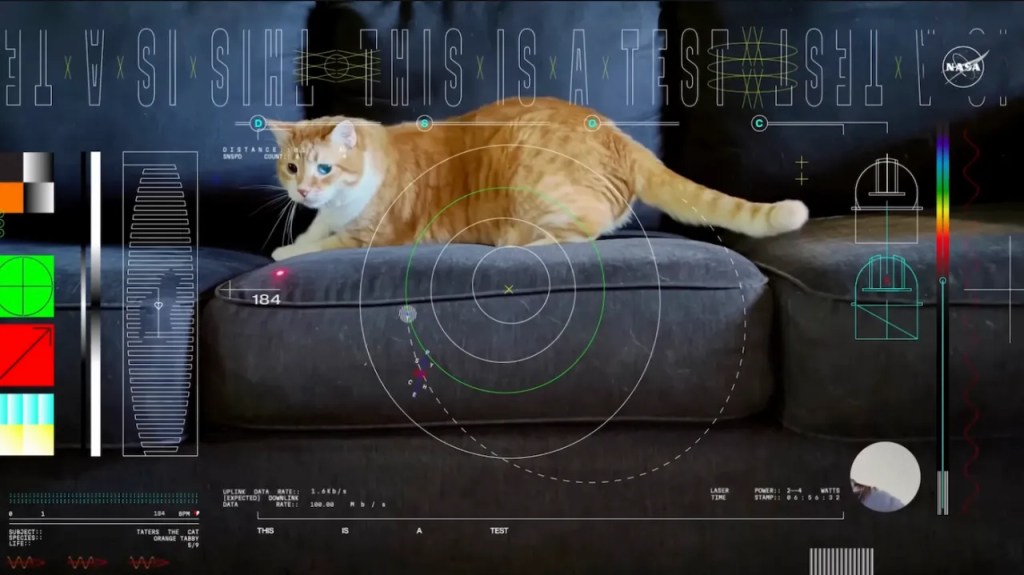

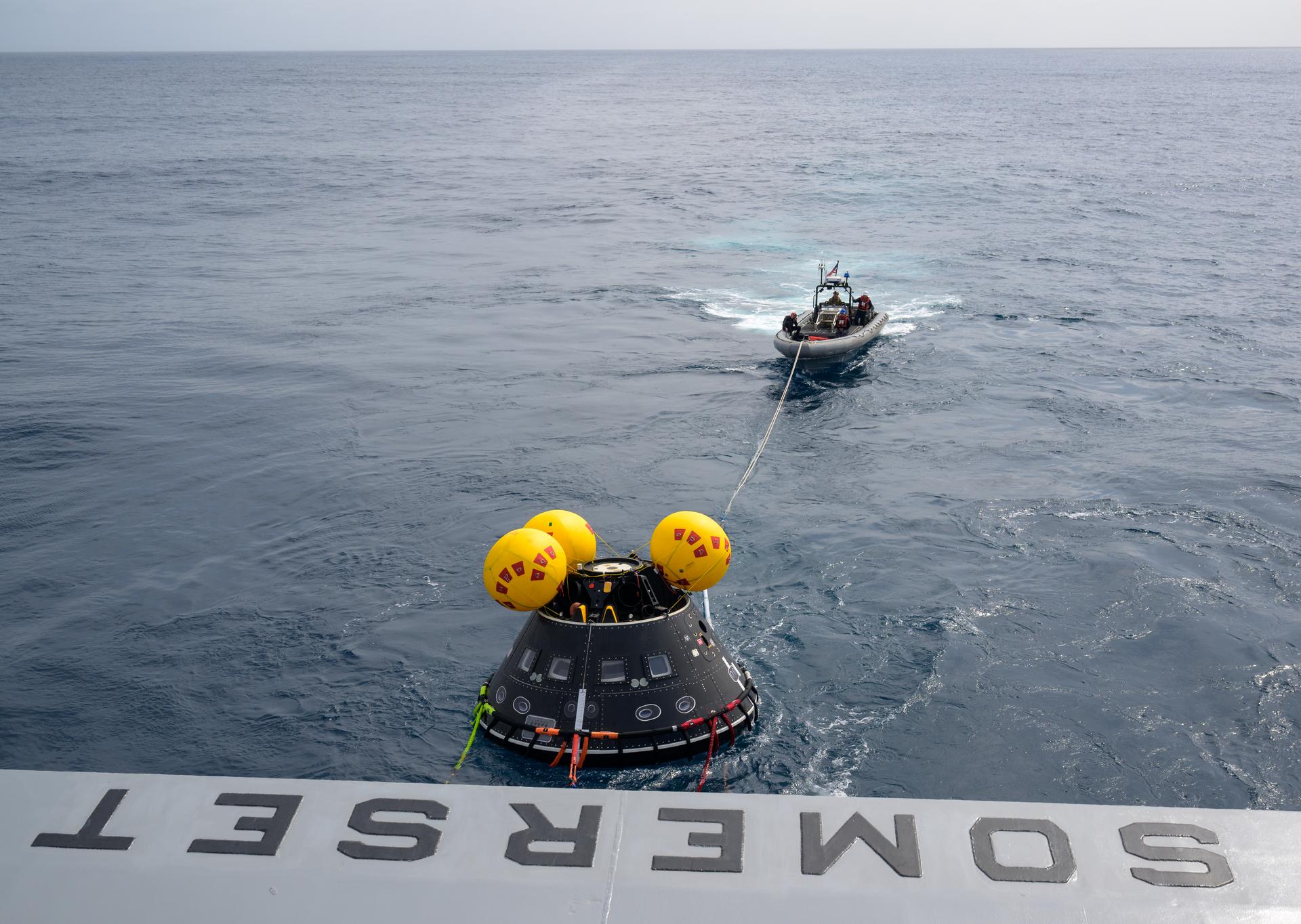

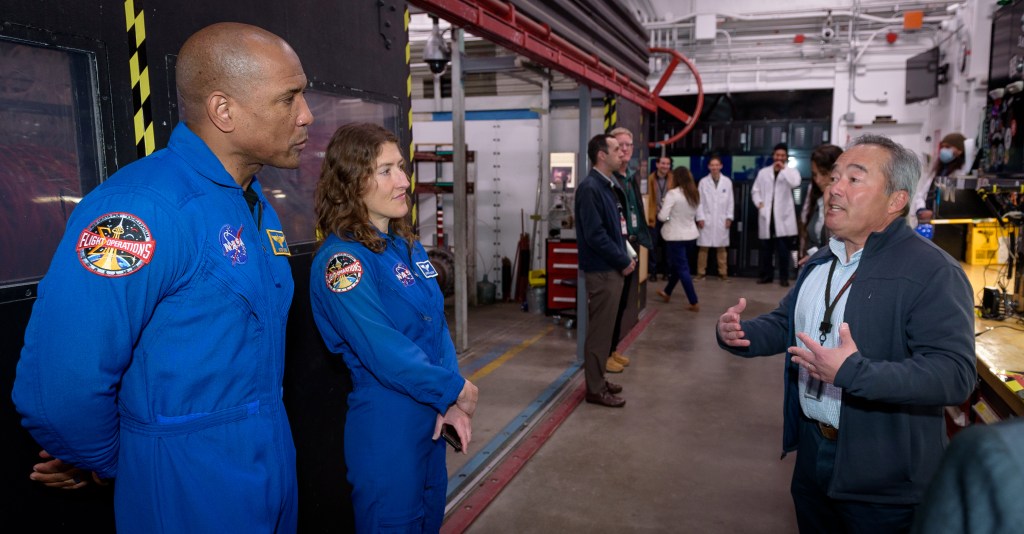







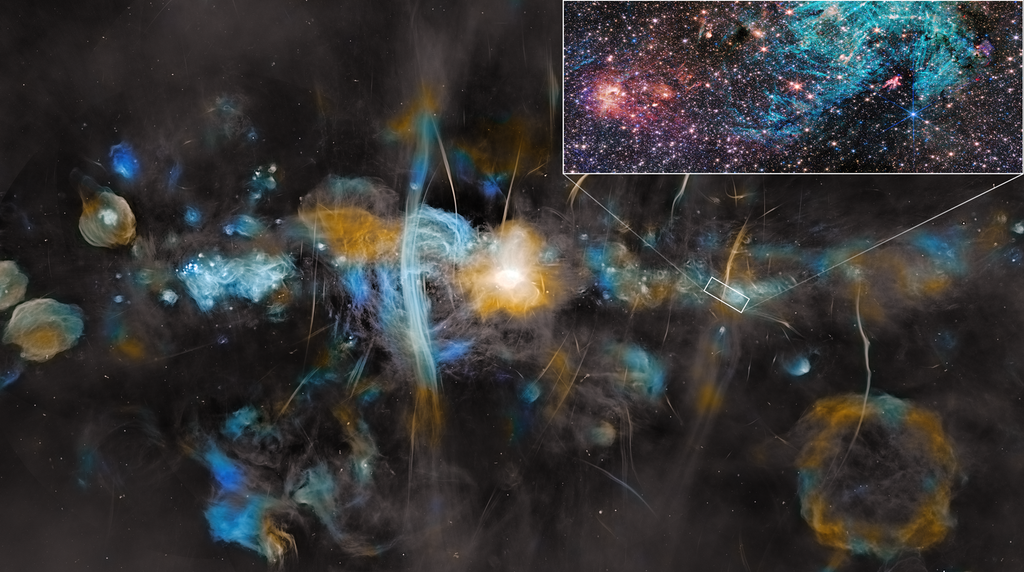

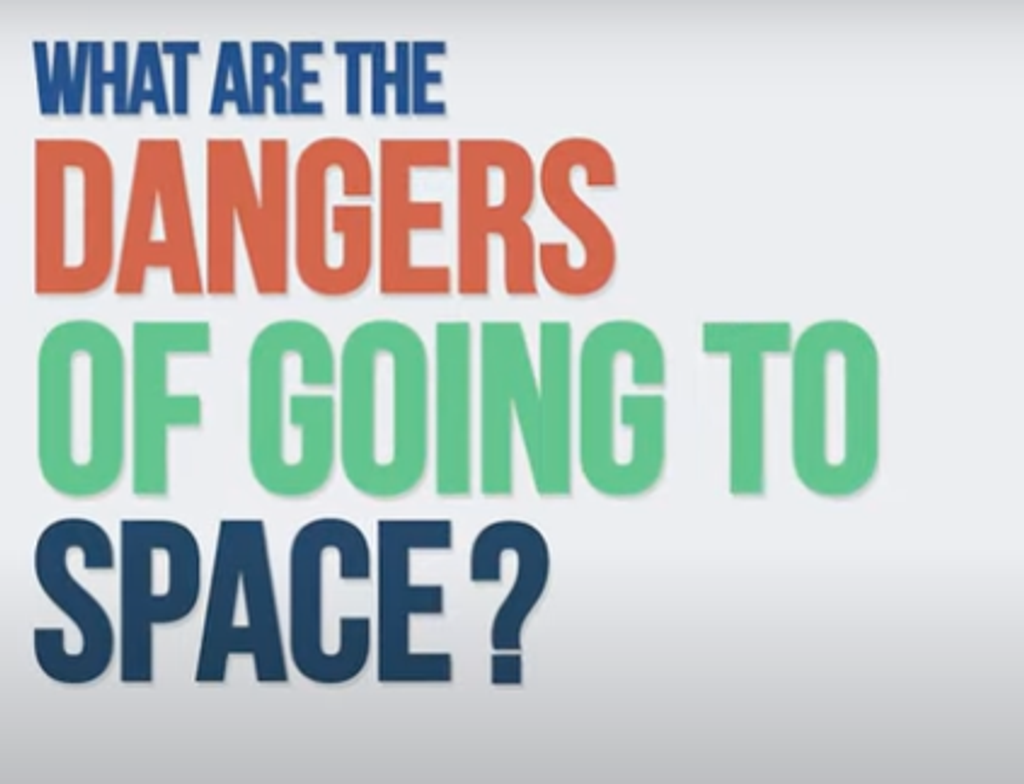
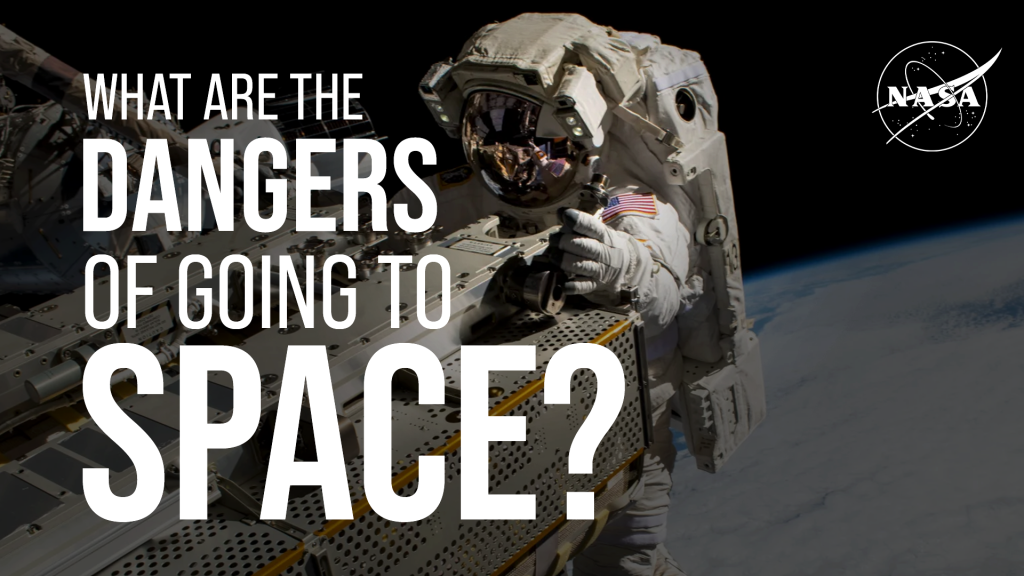
/quantum_physics_bose_einstein_condensate.jpg?w=1024)











